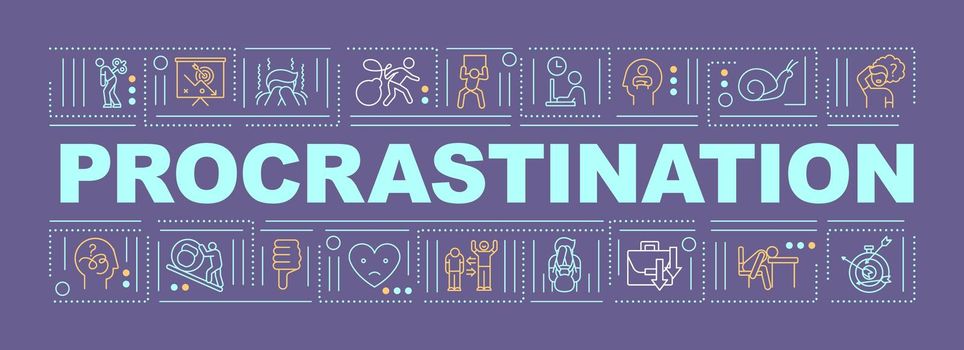Procrastination is a term that carries a lot of negative connotations. It is often associated with laziness, lack of motivation, and a tendency to put things off until the last minute. However, there is another side to procrastination that is often overlooked: Creative Procrastination.
Creative procrastination refers to the practice of delaying work on one project in order to focus on another. This might seem counterintuitive, but it can actually be a highly effective way to boost creativity and productivity.
When we work on a project for an extended period of time, we can become stuck in a rut. Our thinking becomes limited, and we start to lose sight of the big picture. By taking a break and working on something else, we give our minds a chance to refresh and recharge. This can lead to new insights and fresh perspectives that can help us tackle our original project with renewed energy and creativity.
Creative procrastination can take many forms. Some people might use it as an opportunity to work on a completely different type of project, such as a creative writing exercise or a painting. Others might use it as a chance to catch up on other work-related tasks that have been neglected.
The key to effective creative procrastination is to make sure that the new task is still meaningful and engaging. It should be something that allows you to use your skills and creativity in a different way, rather than simply being a distraction.
Of course, it is important to be mindful of deadlines and not let creative procrastination become an excuse for putting off important work. It is also important to be honest with yourself about whether you are truly using the time productively, or simply procrastinating out of fear or anxiety.
If done correctly, however, creative procrastination can be a powerful tool for boosting creativity and productivity. It allows us to break free from the constraints of a single project and explore new ideas and approaches. So the next time you find yourself struggling to make progress on a project, consider taking a break and trying out some creative procrastination. Who knows – you might just come up with your best work yet.
Benefits of Creative Procrastination
Creative procrastination can offer a number of benefits, including:
Enhanced Creativity: Creative procrastination can give your brain a chance to take a break from your main project and engage in a different task or activity. This can lead to new and fresh perspectives, which can help spark creative ideas and solutions for your original project.
Improved Productivity: When you work on a single project for an extended period of time, you can become mentally fatigued and lose focus. By taking a break and working on a different task, you give your mind a chance to recharge. This can help you return to your original project with renewed energy and focus.
Reduced Stress: Creative procrastination can be a stress-reducing activity. When you are stuck on a project or feeling overwhelmed, taking a break to engage in a different activity can help you relax and reduce stress levels.
Skill Development: Engaging in a different task or activity during a creative procrastination break can help you develop new skills or strengthen existing ones. This can be beneficial in both your personal and professional life.
Increased Motivation: By engaging in a different task or activity, you can increase your motivation to return to your main project. The sense of accomplishment and productivity that comes with completing a different task can motivate you to tackle your main project with renewed enthusiasm.
Overall, creative procrastination can be a valuable tool for enhancing creativity, improving productivity, reducing stress, developing new skills, and increasing motivation. It is important, however, to use creative procrastination in moderation and to ensure that it does not become an excuse for procrastinating on important tasks.
Steps to Use Creative Procrastination
To use creative procrastination to work for your exponential growth, you should follow these steps:
- Identify Your Main Project: Determine the project or task that you need to complete and set a deadline for it.
2. Determine Your Breaks: Decide on what you will do during your creative procrastination breaks. Choose activities that will allow you to engage in different forms of creativity, skill-building, or personal growth.
3. Schedule Your Breaks: Schedule your breaks into your workday or workweek. This can help you avoid burnout and maintain your productivity.
4. Set Goals for Your Breaks: Set goals for each creative procrastination break. This can help you stay focused and ensure that you are making progress toward your larger goals.
5. Track Your Progress: Keep track of your progress towards your larger goal, as well as the progress you make during each creative procrastination break. This can help you see how your breaks are contributing to your overall growth.
Some examples of ways to use creative procrastination to work for your exponential growth could include:
- If your main project involves writing, taking a break to work on a different type of writing project, such as poetry or creative nonfiction.
- If your main project involves building a new skill, taking a break to practice a different skill, such as a musical instrument or a new language.
- If your main project involves creating a new product or service, taking a break to research and learn about new technologies or business models that could be applied to your project.
By using creative procrastination in this way, you can work towards your larger goals while also engaging in activities that promote personal growth and creativity. It is important, however, to balance your breaks with your main project and to ensure that you are not using creative procrastination as an excuse for avoiding important work.




